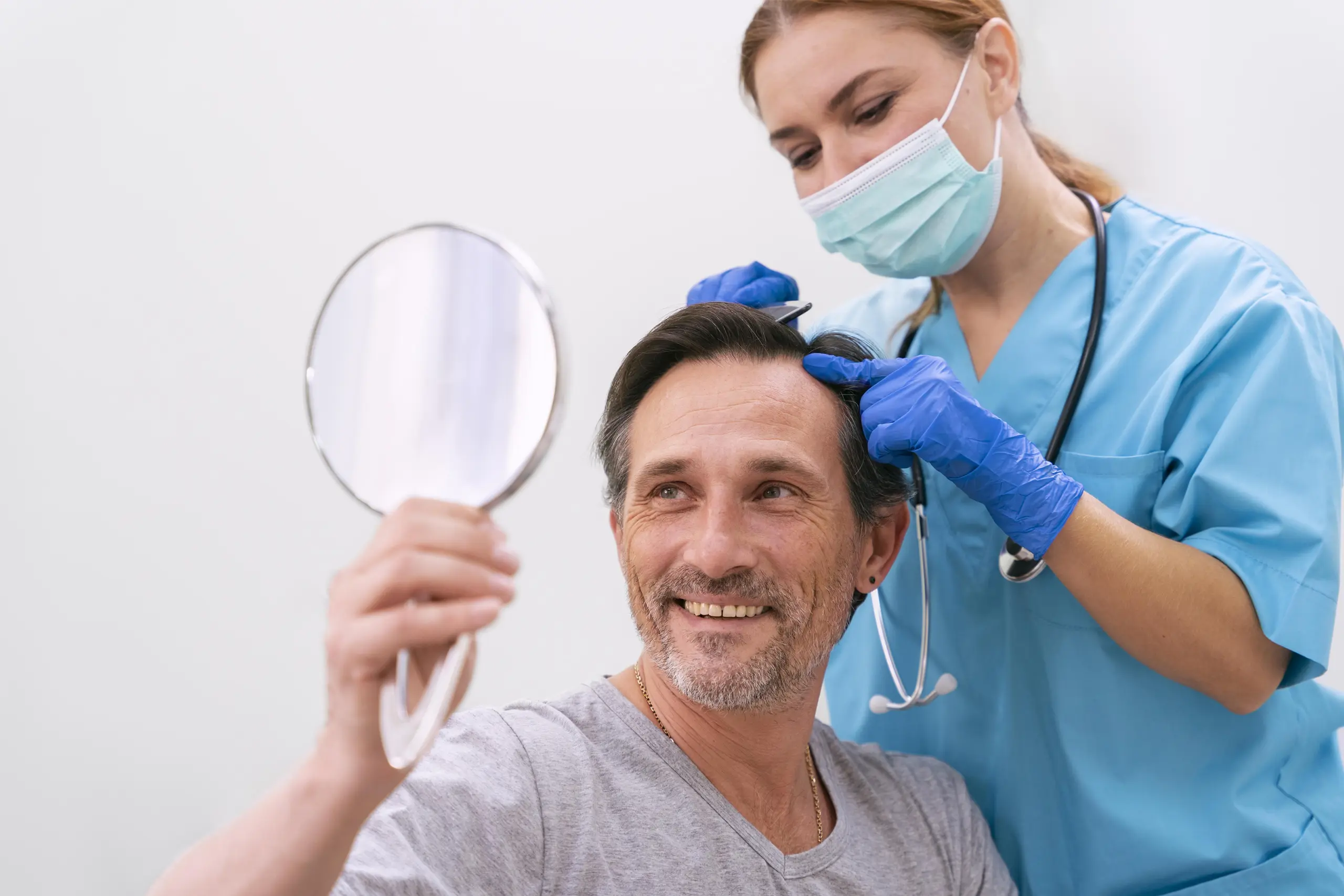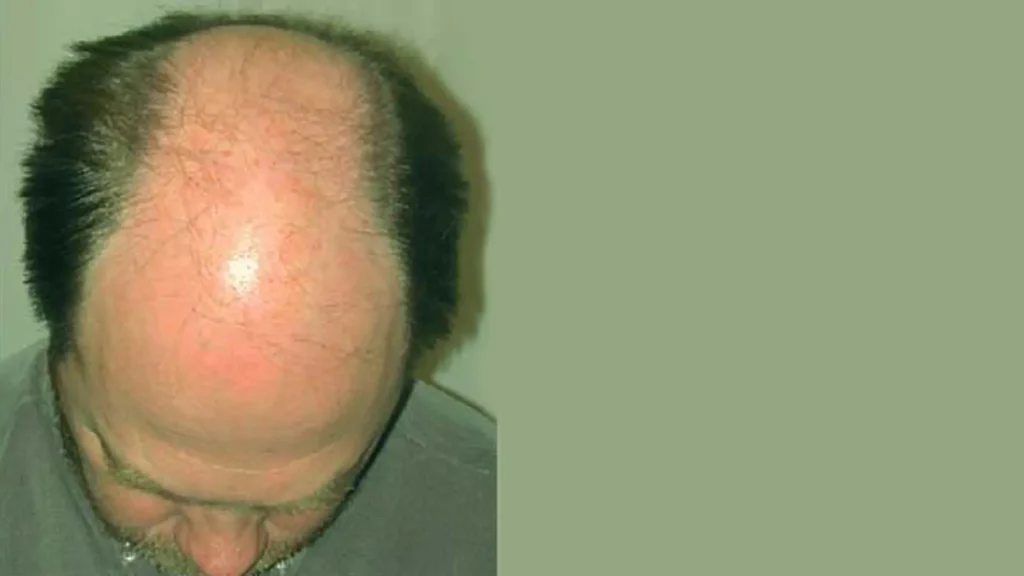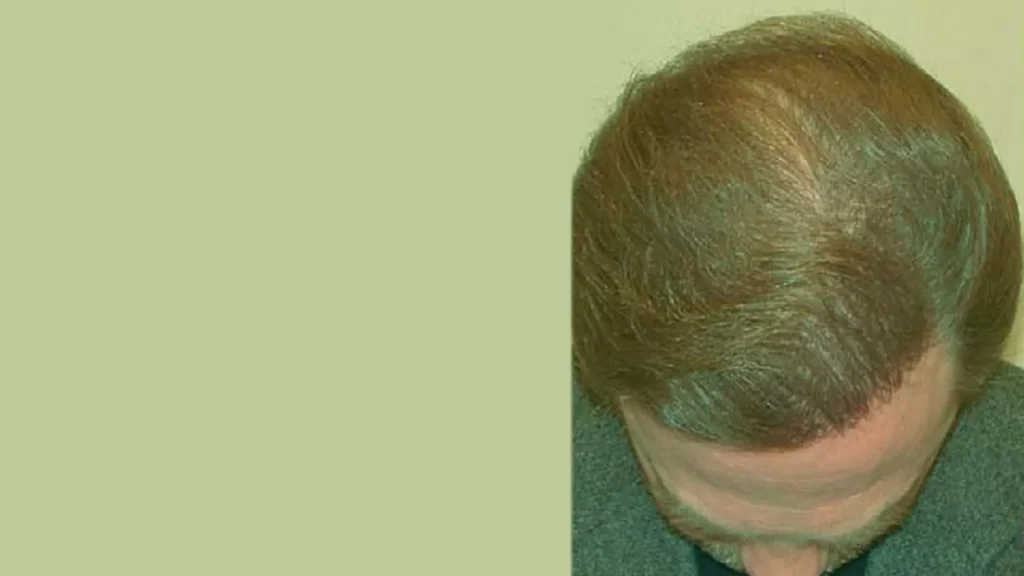FUE Hair Transplantation

Causes of hair loss are often a blend of genetic predisposition, aging, and hormonal shifts. Additional factors like trauma, infections, stress, and smoking can expedite hair loss and lead to thinning or baldness. Our FUE procedure is designed to address these concerns, offering a customized solution for each patient’s unique situation.
FUE Hair Transplantation
Are you experiencing the distress of baldness? You’re not alone. Over 60% of men and approximately 10% of women face hair loss. Beyond appearance, the absence of hair follicles on the scalp may increase the risk of skin damage and cancer from sunlight. We offer a solution that goes beyond aesthetics – Follicular Unit Extraction (FUE) hair transplantation.
While baldness might be a natural part of the aging process, our FUE procedure is a cutting-edge option aimed at restoring both confidence and a full head of hair. With FUE, we tap into the body’s natural healing mechanisms to provide results that look and feel natural. Our minimally invasive approach ensures that you can embrace life with renewed vitality.
Ideal Candidate
Wondering who is an ideal candidate for FUE hair transplantation? If you have sufficient hair behind your ears on the scalp, you’re likely a candidate. Most individuals opt for FUE after the age of 30 when hair loss tends to stabilize. Our procedure utilizes your own hair, eliminating concerns about future shedding due to genetic programming. Plus, FUE isn’t just for the scalp – it can also help enhance facial hair with beard, mustache, and eyebrow transplants.

Reclaming Your Natural Hair
Reclaiming your natural hair doesn’t have to disrupt your routine. After the procedure, you can return to work within days. A gentle post-op care routine ensures a seamless recovery process, and within weeks, you’ll notice the temporary shedding of hair – a normal and expected phase. This is followed by a period of steady growth and development, with final results shining through after about 6 months.
Our commitment to your well-being extends to the decision-making process. Deciding whether a second session or revision is needed should only be considered after 6 months of observing results.
We understand the emotional impact of hair loss and are dedicated to helping you regain your self-assurance through our advanced FUE hair transplantation procedure. Reach out to us today and embark on your journey to a revitalized you.
FUE HAıR TRANSPLANTATION
Before & After


Treatment Stages
1. Step
The patient’s request is evaluated. The patient’s own photographs sent by the patient are used initially for this purpose.
2. Step
When the patient arrives in Turkey, he/she is examined by Prof. Dr. Mübin Hoşnuter himself, and the final plan for the treatment is determined.
3. Step
Blood tests and other tests are performed the day before the operation in the hospital where the operation will be performed. The anaesthesiologist evaluates these tests and gives approval.
4. Step
On the day of the operation, the patient comes to the hospital on an empty stomach, and the operation is performed. The patient stays in the hospital for one or two nights.
5. Step
After the patient is discharged, he/she is transferred to his/her hotel.
6. Step
The patient is transferred to the clinic once or twice for dressing and control depending on the type of operation performed.
7. Step
After the doctor’s approval, the patient can return to his/her country.
Frequently Asked Questions
The hair transplantation procedure generally takes between 6 and 8 hours. During the procedure, patients have breaks for meals, drinking water, or using the restroom.
Patients do not need to stay at the hospital after hair transplantation. They are free to return home right after the procedure.
Staying in Turkey for 3 days is ideal for hair transplantation. The first day involves a physical examination and hair analysis, the second day is for the transplantation procedure, and the third day includes a post-op check-up with the doctor.
There are no limitations to undergoing other aesthetic procedures before or after hair transplantation. However, both the hair transplant doctor and the plastic surgeon should assess the patient separately. Seeking assistance from a patient consultant is recommended for planning both surgeries and avoiding inconvenience.
Patients should refrain from blood-thinning medications (anticoagulants like aspirin, ecoprin, heparin, coumadin, Plavix) for 2-3 days before the procedure. However, all regular medications should continue to be taken as prescribed.
The first hair wash is performed with a special lotion 1-2 days after the procedure. For the first 10 days, washing should be done using a lot of lotion to accelerate healing for scabs.
With techniques like FUE (Follicular Unit Extraction) and DHI (Direct Hair Implantation), patients can generally return to work on the day after the procedure.
Patients can begin exercising after hair transplantation, starting with stretching and basic exercises for the first 3-4 days. For regular sports activities, waiting up to two weeks is recommended.
Hair transplantation should be performed by plastic surgeons or specialized medical staff authorized for this aesthetic procedure.
Hair transplantation is carried out under local anesthesia or sedation for patient comfort. Therefore, the procedure should be conducted in hospitals or sterile clinics.
The hair in the donor area is usually shaved regardless of the technique used. However, shaving the hair in the recipient area depends on the technique.
After hair transplantation, the donor area is covered with a compression dressing, while the recipient area is left open. The dressing should remain for 2-3 days after the procedure.
Wig wearers should stop using them one week before the hair transplant. If hair bonding glue is used on the scalp, it should be thoroughly washed before the procedure. Additionally, any sprays preventing hair loss should be discontinued one week before the operation.
Anyone with a sufficient number of grafts in their donor area can be a candidate for hair transplantation. There are no age, hair quality, or gender restrictions.
Hair transplantation is performed under local anesthesia. If a patient has a systemic disease that could lead to complications after the procedure, the disease should be treated prior to transplantation. Those without enough grafts in the donor area are not recommended for hair transplant. Patients with ongoing scalp diseases should also receive treatment before transplantation.
Transplanted hair from the donor area does not shed as it is insensitive to testosterone. However, hair loss may occur in the upper or side areas of the scalp due to differences in characteristics. Transplanted hair does not shed, but pre-existing hair on the front and sides of the head might.
Shock hair loss, occurring about one month after the procedure, is normal, expected, and temporary.
It’s important to avoid swimming, sauna, heavy sports for six weeks. Refraining from smoking and alcohol aids in faster recovery. Patients can use the shampoo they were using prior to the procedure.
Patient Registration Form
SmyrnaMED
Rediscover Your Beauty...
If you are looking for a reliable, friendly, and people-centered approach in the field of Aesthetic Plastic Surgery, Dental Treatment and Hair Transplantation, you are in the right place. SmyrnaMED is just a phone call away.
